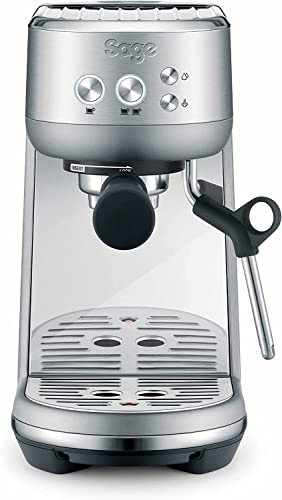Should You Buy an Espresso Machine?
Espresso machines require higher pressure and temperatures than conventional coffee makers. They also produce more intense and full-bodied coffee.
You'll want a model that has dual boilers, which allows you to make steam and espresso at the same time. This is a significant upgrade over the majority of single boiler espresso machines.
Features
Making cafe-quality espresso at home required the use of a lot of skills however, modern machines have made it possible for beginners to pull off a quality shot. One of the key features is the pressure gauge, which lets you see the pressure of water in the pump as it operates. This will help avoid channeling, which can lead to weak shots. It's used on the top models.
Another feature that is important is a pre-infusion that helps to ensure that all of the grounds are filled with water, which is essential for extraction. This feature is also found on higher-end machines and reduces the possibility that the coffee will ignite.
You should also think about whether you want to purchase semi-automatic or automatic machines. Super-automatic machines are foolproof and allow you to make espressos and milk beverages at the touch of an button. These machines are costly and may not be for you for those who prefer to do the grinding, tamping, and steaming of milk by yourself.
You can select an automatic semi-automatic that comes with the bean hopper and grinder for a more personal experience. These machines are more traditional looking and let you manage aspects of the espresso process such as grind settings, strength, and temperature. machine espresso are more affordable however they require more effort from the user.
Cost
There are plenty of various options when choosing an espresso machine. It's all about the purpose you intend to make use of it and which features are important to you. In general, more features equate to more expensive costs. You may also want to think about whether you would like the ability to start and stop the brewing process by hand or if you prefer a fully automated system.
Basic domestic espresso machines are equipped with portsafilters, a milk container, and a portafilter that can be connected manually. They require daily cleaning of both the portafilters and the milk containers. Descaler treatments are usually needed every two months to keep the machines in good condition. Some models come with built-in filters that reduce hardness and enhance the flavor.
Professional espresso machines typically have dual boilers, which allow you to steam and brew milk simultaneously. This helps you save time and ensures that every function is brewed at the right temperature. Having a professional-grade espresso machine at home makes it easy to prepare delicious lattes, cappuccinos, flat whites and other drinks.
Certain espresso machines come with a manual control for grinder regulation, amount of ground coffee and tampering pressure, to give you the feel of a barista at home. These machines are more expensive than semi-automatic models but they're a great option for people who enjoy the process of making coffee.
Types

Think about your options carefully before deciding whether to buy or rent an espresso machine. Leased machines require less cash upfront, but they could increase maintenance costs over time. It will cost more initially but you'll be able to own your equipment outright.
The type of espresso maker you select will depend on the kind of coffee you're serving as well as your needs. Most models come with steam wands that heat and froth the milk to make cappuccinos and lattes. Some models also come with a removable dishwasher-safe jug that can be used to make large quantities of iced drinks or coffee.
There are models that are fully automatic, which grinds, measures and tamps your beans. It also uses pre-measured pods for ease of use. These models are generally the most user-friendly Lab tests, however they are more expensive than manual or semi automatic models.
There are single and multi-boiler machines that are more temperature stable than other types that allow you to consistently make delicious espresso. But these take up more counter space and cost more.
Maintenance
A well-maintained espresso maker will ensure that your coffee is at its best. Regular cleaning and descaling can also prolong the life of the espresso maker. Additionally, regular cleaning will prevent the build-up of coffee oils that have gone rancid, which can alter the taste of your espresso.
Giorgio suggests that you look for a coffee maker that has an insulated brew group that can be removed and an easy-to-clean drip tray. He suggests you save time and money by not having to clean the drip tray, and also getting rid of the expense of a separate coffee frother.
A high pressure in the water will aid in achieving a rich, even crema and a consistent extraction. A quality machine will have an average pressure of nine bars.
Consider how much space is available in your kitchen and whether you're planning to pipe it. If you are limited in cabinet space, you might want to consider purchasing an portable model or a drip-free model that can be used without connected to a water line. It will also allow you to avoid the burden of emptying an empty waste container each time you use a drip-free model. You should also make sure that you purchase an espresso machine equipped with a tank for water that is simple to fill, remove and clean.
